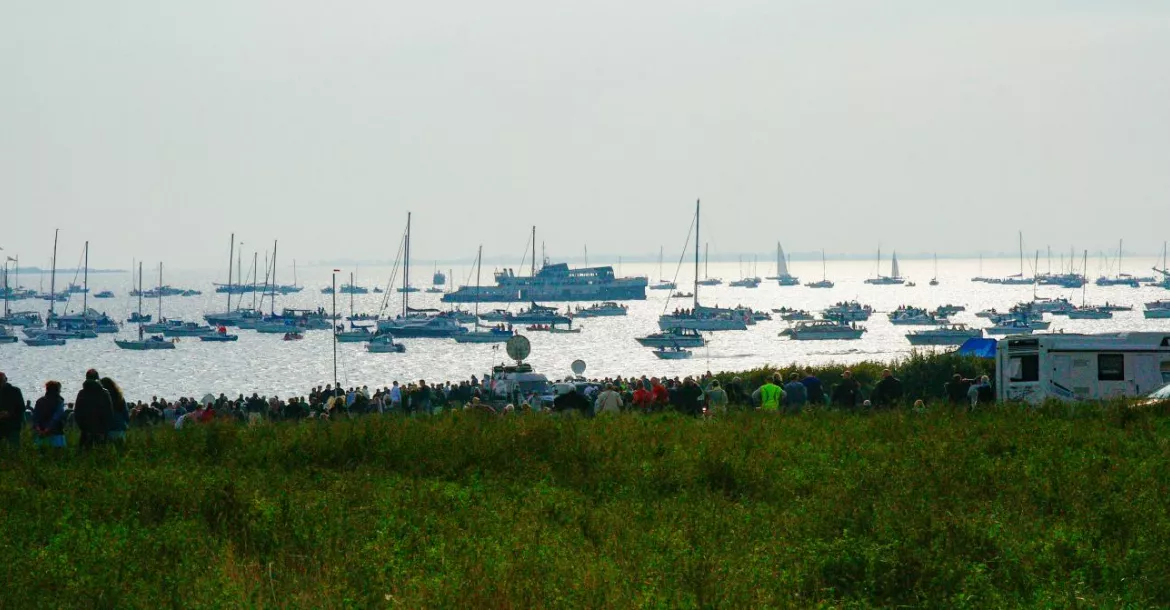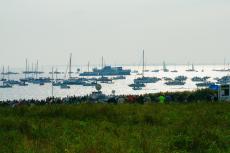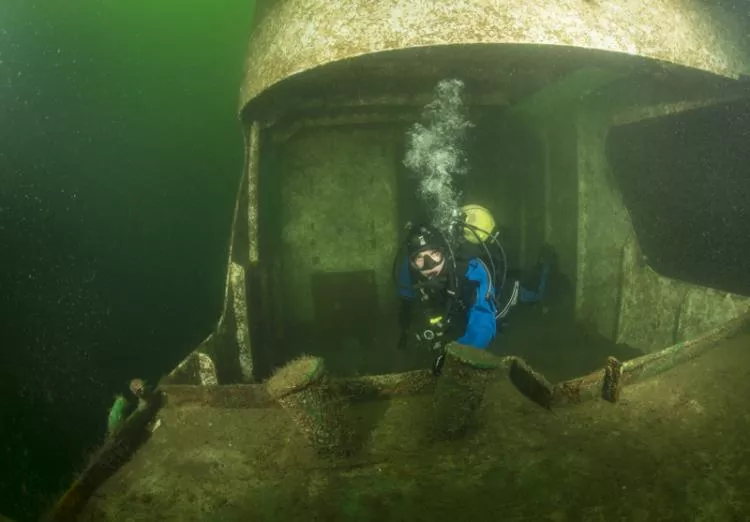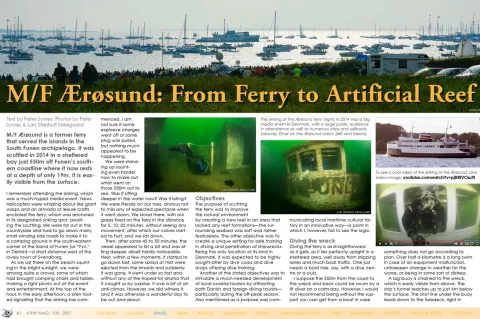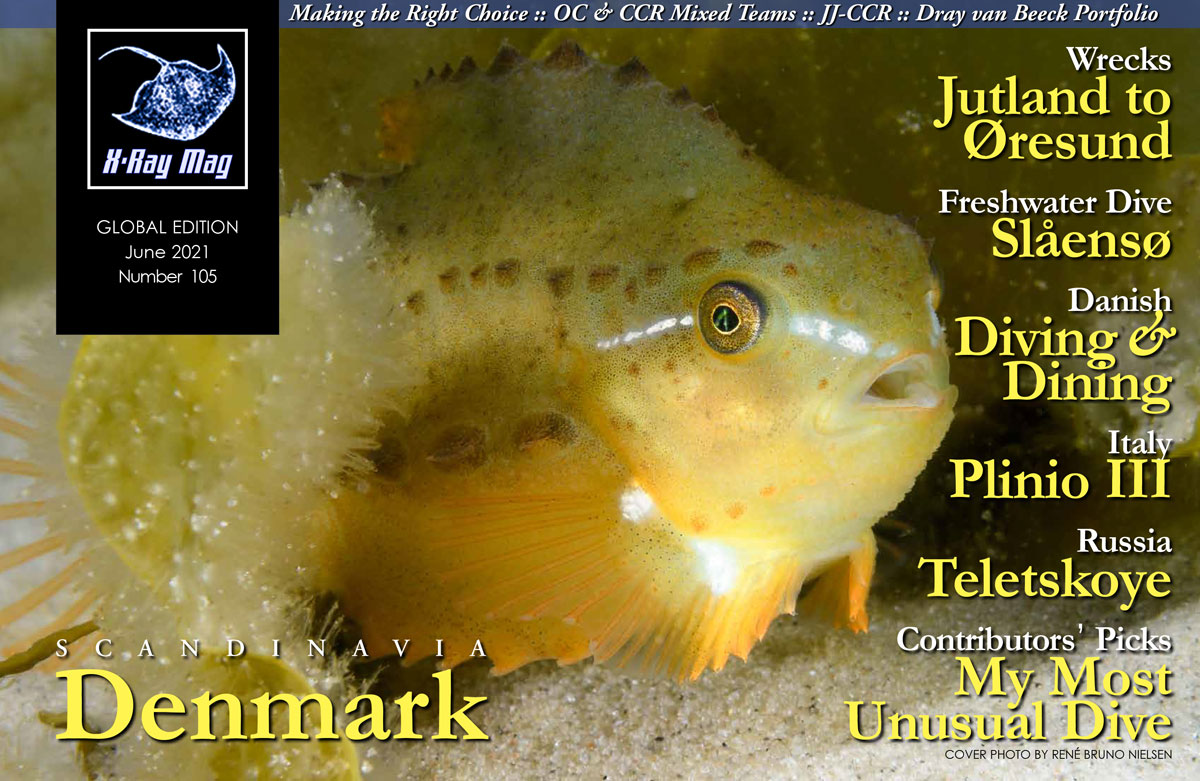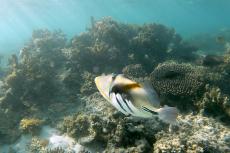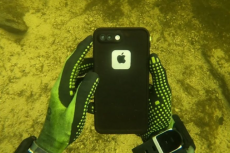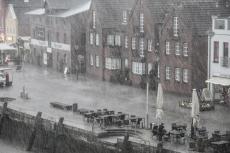M/F Ærøsund is a former ferry that served the islands in the South Funen archipelago. It was scuttled in 2014 in a sheltered bay just 550m off Funen’s southern coastline where it now rests at a depth of only 19m. It is easily visible from the surface.
Contributed by
Factfile
M/F Ærøsund was a Danish ferry, which served the route between Ærøkøbing and Svendborg from 1960 to 1999, after which it was replaced by a modern ferry. Ærøsund was built by Husumer Schiffswerft in Germany, as build number 1118 and launched in 1960. It was rebuilt in 1970.
Length: 55.26m
Width: 9.32m
Height (without masts): 13m
Tonnage: 396 BRT
Deadweight: 221 ton
Engines: 2 x Mak Mau 423, 800 HP
Speed: 13 knots
Passengers: 700
Cars: 40
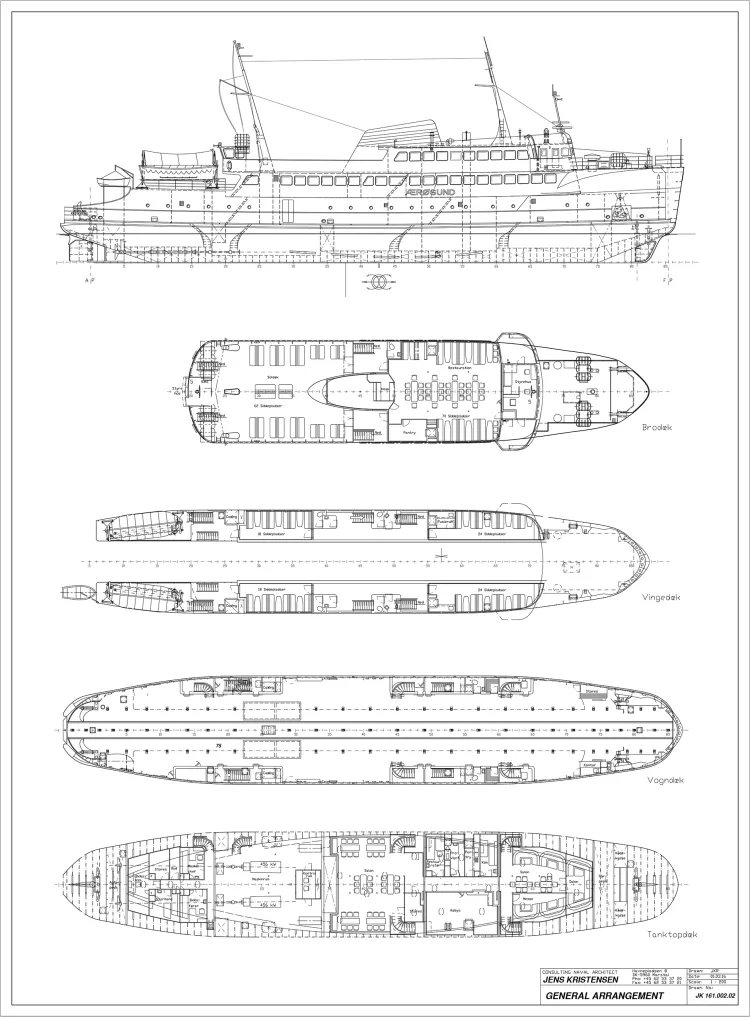
I remember attending the sinking, which was a much-hyped media event. News helicopters were whizzing about like giant wasps and an armada of leisure crafts encircled the ferry, which was anchored in its designated sinking spot, awaiting the scuttling. We were far out in the countryside and had to go down many small winding side roads to make it to a camping ground in the south-eastern corner of the island of Funen (or “Fyn,” in Danish)—a short distance west of the lovely town of Svendborg.
As we sat there on the beach squinting in the bright sunlight, we were among quite a crowd, some of which had brought camping chairs and tables, making a right picnic out of the event and entertainment. At the top of the hour, in the early afternoon, a siren tooted signalling that the sinking has commenced. I am not sure if some explosive charges went off or some plug was pulled, but nothing much appeared to be happening.
We were standing up squinting even harder now to make out what went on those 550m out to sea. Was it sitting deeper in the water now? Was it listing? We were literally on our toes, anxious not to miss any of the expected spectacle when it went down. We stood there, with our gazes fixed on the ferry in the distance for 5, 10, 20 minutes, without seeing any movement, after which our calves started to hurt, and we sat down.
Then, after some 45 to 50 minutes, the vessel appeared to list a bit and was sitting deeper, albeit hardly noticeable. Next, within a few moments, it started to go down fast, some sprays of mist were ejected from the innards and suddenly it was gone. It went under so fast and without any of the hoped-for drama that it caught us by surprise. It was a bit of an anti-climax. However, we did witness it, and it was otherwise a wonderful day to be out and about.
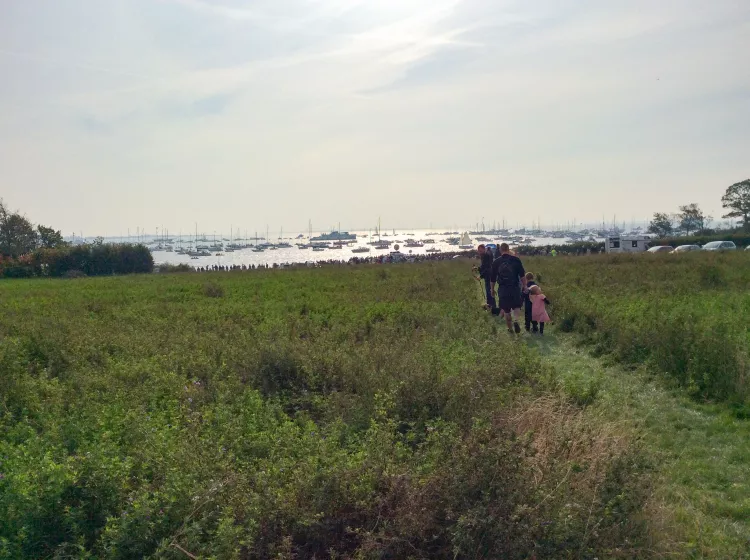
Objectives
The purpose of scuttling the ferry was to improve the natural environment by creating a new reef in an area that lacked any reef formations—the surrounding seabed was soft and rather featureless. The other objective was to create a unique setting for safe training in diving and penetration of shipwrecks. Being the only location of its kind in Denmark, it was expected to be highly sought-after by dive clubs and dive shops offering dive training.
Another of the stated objectives was to stimulate a much-needed development of local coastal tourism by attracting both Danish and foreign diving tourists—particularly during the off-peak season. Also mentioned as a purpose was communicating local maritime cultural history in an innovative way—a point in which I, however, fail to see the logic.
Diving the wreck
Diving the ferry is as straightforward as it gets, as it lies perfectly upright in a sheltered area, well away from shipping lanes and much boat traffic. One just needs a boat ride, say, with a dive centre or a club.
I suppose the 550m from the coast to the wreck and back could be swum by a fit diver on a calm day. However, I would not recommend being without the support you can get from a boat in case something does not go according to plan. Over half a kilometre is a long swim in case of an equipment malfunction, unforeseen change in weather for the worse, or being in some sort of distress.
A big buoy is chained to the wreck, which is easily visible from above. The ship’s funnel reaches up to just 6m below the surface. The shot line under the buoy leads down to the foredeck, right in front of the wheelhouse, which is a good point to start exploring the wreck. The car deck, which also has rails for trains, is wide open and can most easily be entered through the bow port, which is a big opening.
Caution
In this regard, a piece of advice here is pertinent: As fine silt has accumulated inside the car deck, caution must be exercised when entering, because of the risk of a silt-out, in case this sediment gets kicked up, which can lead to losing sight of an exit and disorientation. Do not enter if you are not prepared, trained and equipped for such an eventually. If you swim through, stay well clear of the deck and be mindful of not disturbing the silt. It is not just a matter of safety, as it also ruins the visibility for the next diver.
The deepest point is the rudder at 19m, the car deck is at 16m, and the bridge and saloon are at only 12m. As such, it provides plenty of latitude in regard to no-decompression limits and gas consumption. It is a quite uncomplicated dive. That said, one should never slack on any aspects of preparation, equipment and safety, regardless of how shallow or easy a dive may appear.
Decontamination and diver safety
Prior to the scuttling, M/F Ærøsund went through comprehensive environmental decontamination to ensure the safety of the wreck for diving. This decontamination abided by a report produced by the environmental consulting group, COWI, based on analyses of all components of the ferry. As a result, the following objects were removed:
• Motors, pistons, screws, propeller shafts, fuel, oil and lubricants.
• Windows and rubber mouldings, floor linoleum, insulating material and doors.
• Tiles, sinks, toilets, furniture and kitchen appliances and equipment.
• Asbestos, cables, lead ballast, electronics and hydraulics, wood covering and car deck sealants.
• Bottom paint containing TBT and tar from the sides and walls of lounges and rooms below deck.
• Any loose paint, and most of the ferry’s outer paint matrix.
In addition to these items being removed, large holes were carved into the ferry’s deck, sides and bulkheads, creating entry and exit points for divers. Selected stairs and walls were also removed for the same reason.
In total, the ship was stripped of more than 100 tonnes, including the motors, which are currently in use on the other side of the globe. Following the decontamination process, more than 300 tonnes of sand was placed into the bottom of the ferry in order to trim and stabilise it. ■ SOURCE: DESTINATION SYDFYN

